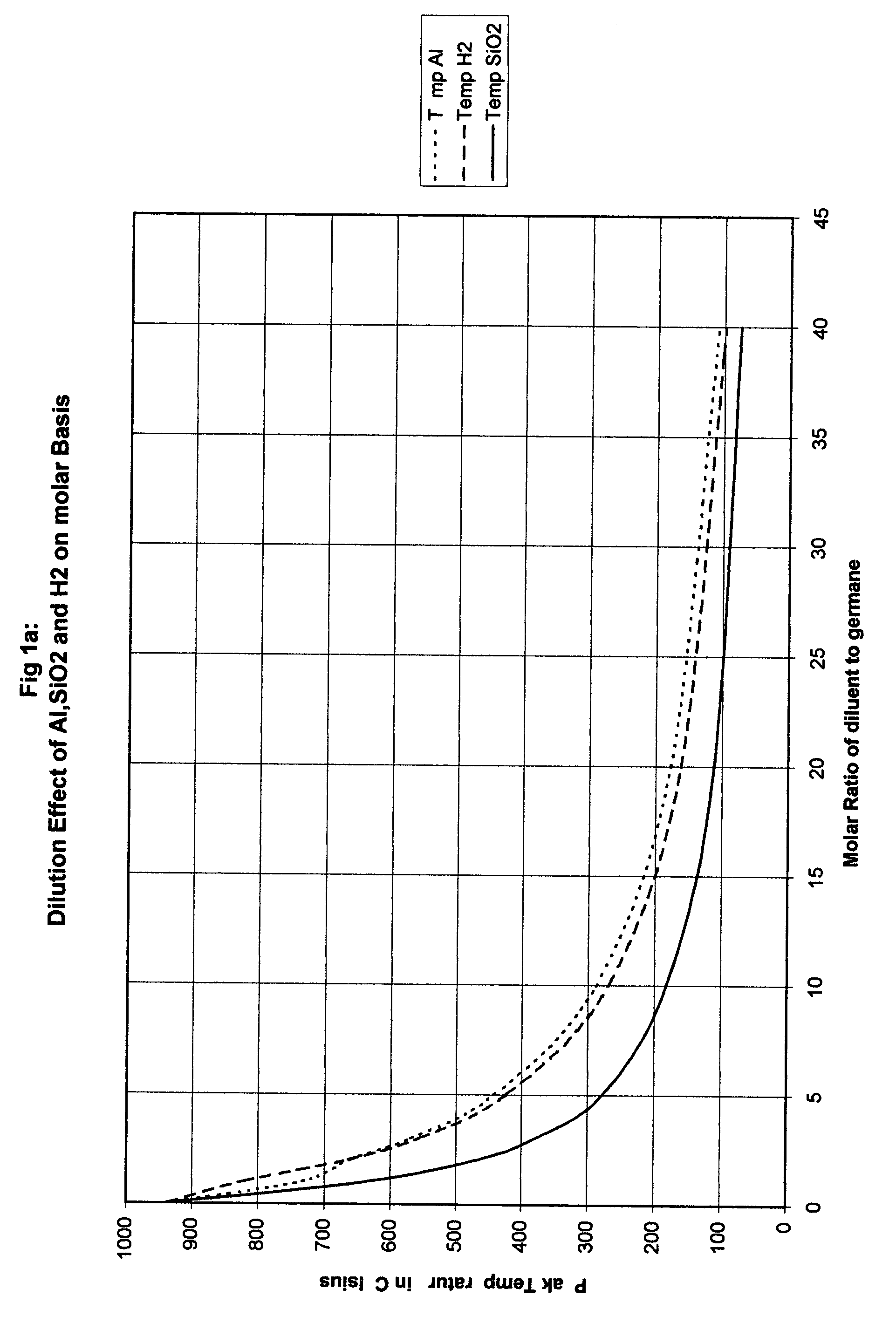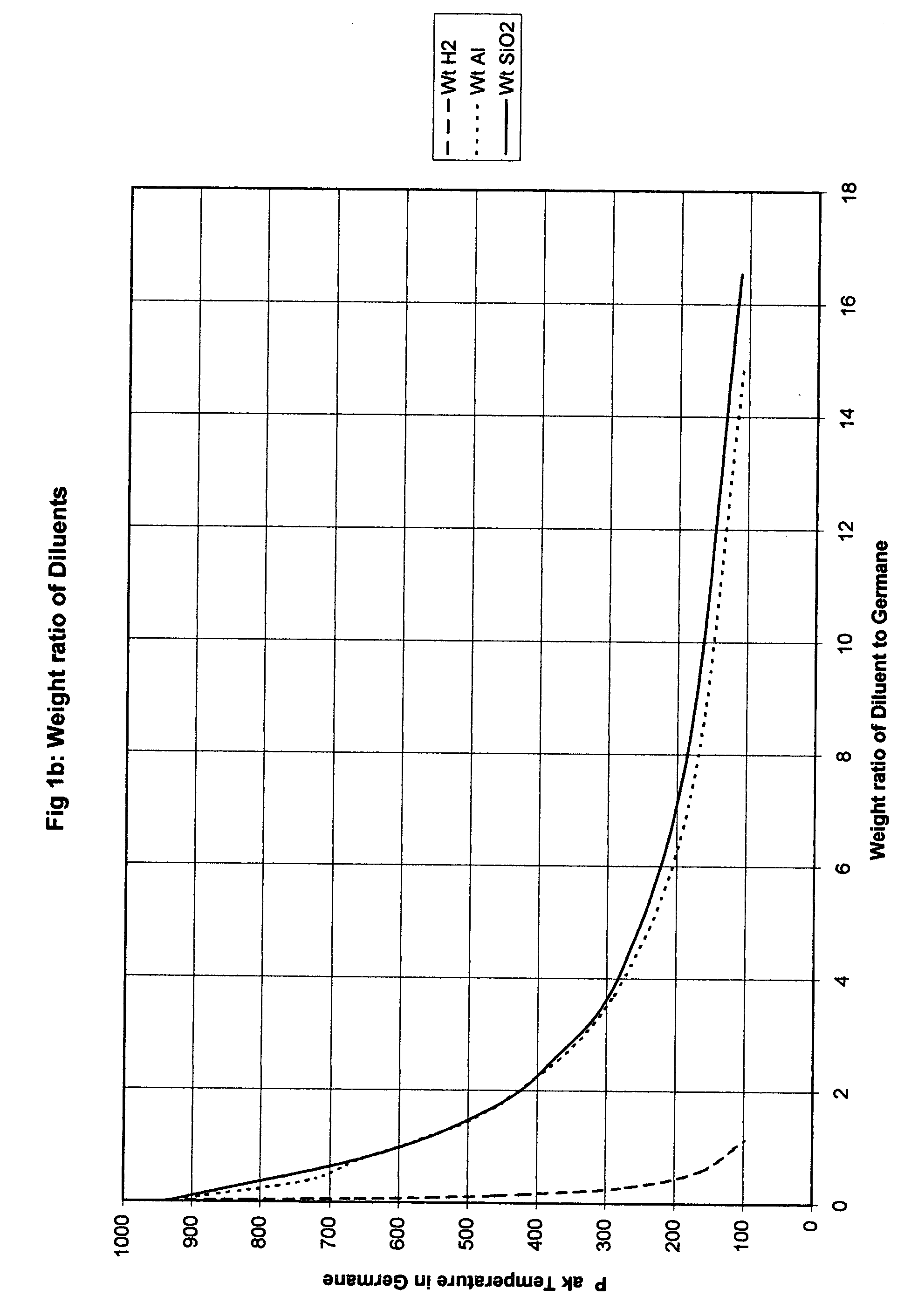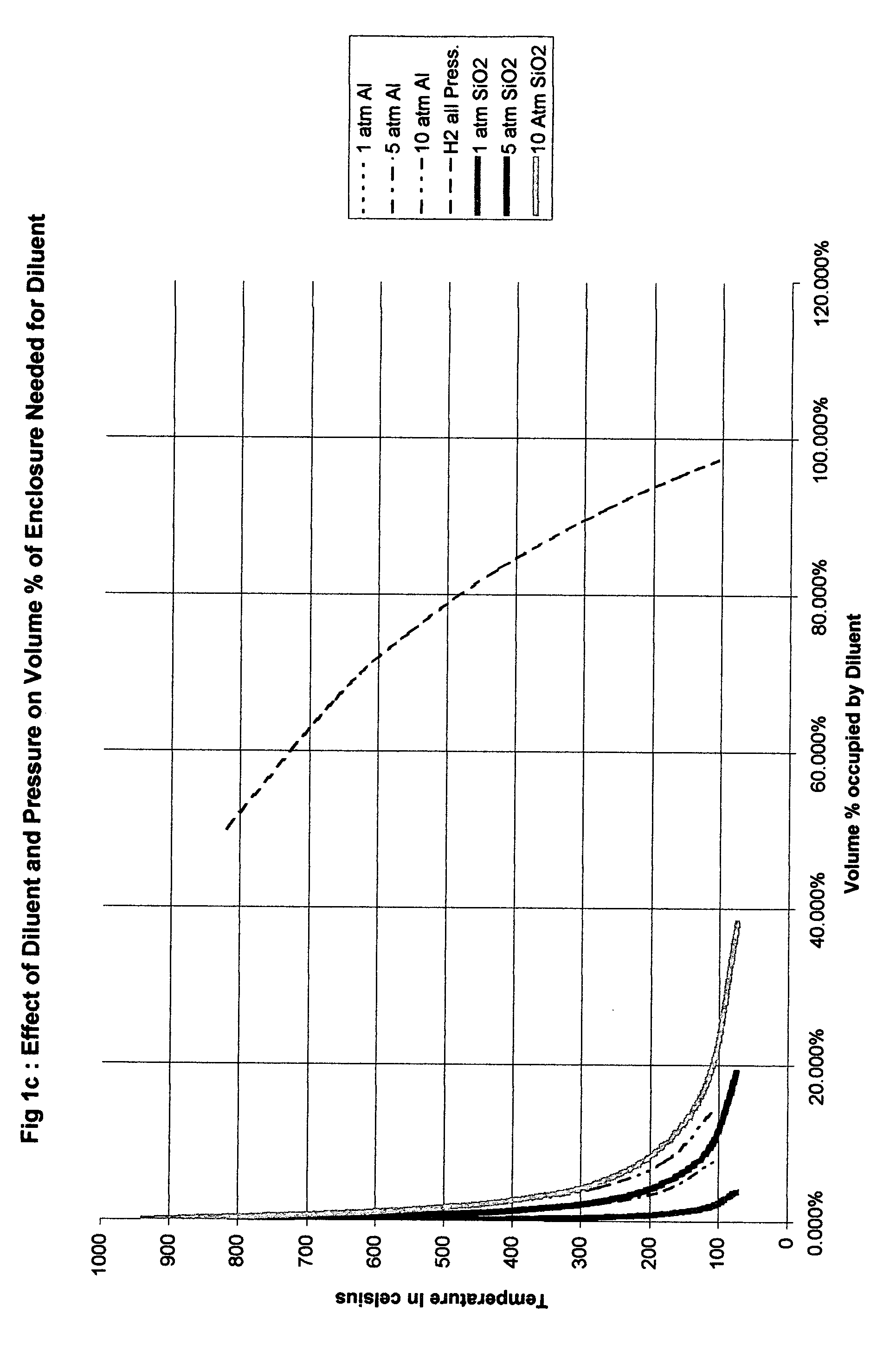Method for safe handling of unstable hydride gases
a technology of unstable hydride and safe handling, applied in the field of chemicals, can solve the problems of no protection, fire and explosion in enclosed spaces, and the risk of reducing the diameter of the pipe is serious, and the risk is reduced
- Summary
- Abstract
- Description
- Claims
- Application Information
AI Technical Summary
Benefits of technology
Problems solved by technology
Method used
Image
Examples
example 2
Germane has only one decomposition route
TABLE 1Peak temperature & pressure for selected hydride gas decompositionHeat of FormationMolesNameFormulakcal / molegas / moleTemp. C.Press. ratioAcetyleneC2H254.2.5-1 2902-3278 6-10.5*PropadieneC3H445.91-21584-2159 8.2-12.5MethylacetyleneC3H438.971-21376-19757.5-11 1-3,butadieneC4H626.11.5-3 803-13748.29-10.8EthyleneC2H412.51-2 606-14275.7-5.9PropyleneC3H64.91.5-3.0 195-1091 4.7-6.86HydrazineN2H422.753106613.5SilaneSiH48.224484.8DisilaneSi2H619.19236165.97GermaneGeH421.729378.12DigermaneGe2H638.8393712.18StannaneSnH438.92174113.5ArsineAsH314.631.58175.5StibineSbH334.681.516609.72BismuthineBiH343.01.5225912.75HydrogenH2Se7.1714254.68SelenideHydrogenH2Te23.8113525.45Telluride
*The experimental measurement for deflagration in acetylene vapor is 11 times the initial pressure, which agrees with these calculations.
Another approach is to dilute the hydride with hydrogen and the appropriate conditions for this can be determined experimen...
example 1
Disilane at 40% Molar with Aluminum
0.4Si2H6+0.6Al →0.8Si+1.2H2+0.6Al Peak Temperature is 485° C.
Assuming the cylinder is at 0.4 atmospheres initially then the final pressure is 0.4×7.63 atm=3 atm compared to a final pressure of 4.5 atm for the hydrogen dilution cylinder a 1 atm initially.
TABLE 3gas molesPressureNameFormulaMol %ratio (out / in)Temp. C.ratioDisilaneSi2H64034857.63GermaneGeH4202497.25.16DigermaneGe2H61034527.3StannaneSnH4102492.85.13ArsineAsH3301.5483.73.8
Thus the additional heat required to heat the solid diluent reduces the peak temperature in a manner similar to dilution with hydrogen and requires much less volume but does not reduce the pressure ratio as much. However as noted above the volume saved can be used to reduce the initial pressure and thus achieve a lower final pressure than would be the case with hydrogen dilution. As a practical matter it will usually be safer and less costly to add more diluent and maintain or even increase the initial fill press...
PUM
| Property | Measurement | Unit |
|---|---|---|
| Temperature | aaaaa | aaaaa |
| Temperature | aaaaa | aaaaa |
| Volume | aaaaa | aaaaa |
Abstract
Description
Claims
Application Information
 Login to View More
Login to View More - R&D
- Intellectual Property
- Life Sciences
- Materials
- Tech Scout
- Unparalleled Data Quality
- Higher Quality Content
- 60% Fewer Hallucinations
Browse by: Latest US Patents, China's latest patents, Technical Efficacy Thesaurus, Application Domain, Technology Topic, Popular Technical Reports.
© 2025 PatSnap. All rights reserved.Legal|Privacy policy|Modern Slavery Act Transparency Statement|Sitemap|About US| Contact US: help@patsnap.com



